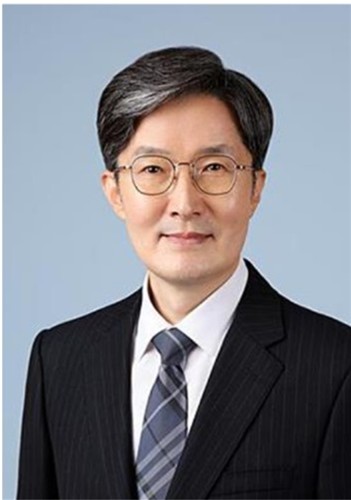South Korea is facing an unprecedented combination of ultra-low birth rates and rapid population aging. Fortunately, the country has established a relatively systematic pension framework, featuring an ideal three-tier structure: the National Pension (state-run), Retirement Pension (corporate), and Personal Pension Savings (individual). As of last year, these systems have collectively accumulated assets exceeding 1,800 trillion won ($1.27 trillion). However, as the aging population accelerates and more people rely on pensions for their livelihoods, the returns generated by these funds remain insufficient. Given demographic trends, the next decade is expected to see a rapid increase in pension assets, making it critical to maximize returns during this period—a matter directly tied to the financial security of the population.
The government is currently pursuing reforms to the retirement pension system. While various opinions have been raised, the focus must be on addressing fundamental issues. The core problem lies in persistently low returns, which have trailed inflation for extended periods. This is largely due to restrictive investment regulations embedded in the system’s design. As the environment for generating stable, long-term returns becomes increasingly challenging, imposing further investment restrictions only reduces the likelihood of achieving target returns. Therefore, it is imperative to reform the system and raise public awareness to secure stable, long-term returns for both personal and corporate pensions. Expanding diversification to include not only traditional assets but also alternative investments should be permitted.
Having overseen investments at the Government Employees Pension Service for over six years since 2015, I have long believed that the services provided by mutual aid associations should be extended to all citizens. Through a robustly constructed investment portfolio, we were able to provide stable retirement security for approximately 330,000 members. By appropriately combining traditional and alternative assets, volatility can be significantly reduced and long-term annual returns of 6–7% are achievable. Of course, pursuing even higher returns would require substantial changes. Currently, returns on retirement and personal pensions hover around 2%, but with system reforms, achieving 6–7% is feasible—a result already demonstrated by advanced pension markets. Managing pension assets with a 4–5% annual return differential could dramatically improve retirees’ quality of life.
To shift portfolios in a desirable direction, it is difficult for individuals to manage investments on their own, as is currently the case with retirement and personal pensions. Most individuals lack the expertise to analyze the characteristics and risks of diverse asset classes, especially alternative investments, which vary greatly by asset type, fund, and manager. Globally, while defined contribution (DC) plans have been the dominant model for retirement pensions, some companies are now reverting to defined benefit (DB) plans out of concern for the investment burden placed on individuals. In advanced pension markets, DB plans have enhanced their soundness through diversified portfolios that include alternative assets. Recently, countries such as the United States have begun exploring ways to allow alternative investments in DC plans as well.
Recently, the US President signed an executive order permitting alternative assets—including private equity, private debt, real estate, infrastructure, and cryptocurrencies—to be included in 401(k) retirement accounts. The timing of implementation will depend on reviews by relevant agencies and the readiness of asset managers. Compared to South Korea, US retirement pensions have delivered far superior returns, buoyed by strong capital markets. Although the soundness of US retirement pensions deteriorated sharply following the early 2000s IT bubble burst and the 2008 financial crisis, they have since recovered to record levels. It is noteworthy that even in this environment, the US continues to pursue reforms aimed at boosting returns.
Australia has long allowed alternative investments in pension asset management. In particular, it has successfully boosted both domestic infrastructure funding and pension returns by promoting investment in infrastructure assets. The country has also focused on improving operational efficiency among pension asset managers, encouraging mergers and acquisitions through yield competition. Recognizing the high costs associated with alternative investments, Australia has implemented various policies to enhance cost transparency and improve returns. In the UK, the largest DC retirement pension funds already allocate about 20% to alternative assets, with plans to increase this to 30% by 2030.
Accordingly, South Korea must now pursue several reforms to ensure sustainable improvements in returns for retirement and personal pensions. First, as the share of DC plans grows in the retirement pension market, it is crucial to manage the financial and operational risks faced by individuals and households. Building trust that long-term target returns are achievable through legal and regulatory reforms is essential.
Second, default options that enable diversified investment—including alternative assets—should be provided to maximize the benefits of long-term investing. While alternative investments have drawbacks such as high costs, low liquidity, and limited transparency, the decline in listed companies and the rise of high-growth unlisted firms mean that excluding alternatives would only reduce investment opportunities. These drawbacks can be addressed through system improvements, but failing to broaden investment opportunities will inevitably lead to increased volatility and lower expected returns. Therefore, rather than shifting investment risk onto individuals, it is most desirable for professionals to manage diversified portfolios as default options.

(Jang Dong-heon, Advisor at Yulchon LLC / Former Chief Investment Officer, Government Employees Pension Service)
(End)
© Yonhap Infomax. Unauthorized reproduction and redistribution prohibited. Use of content for AI training is strictly forbidden.
Copyright © Yonhap Infomax Unauthorized reproduction and redistribution prohibited.

